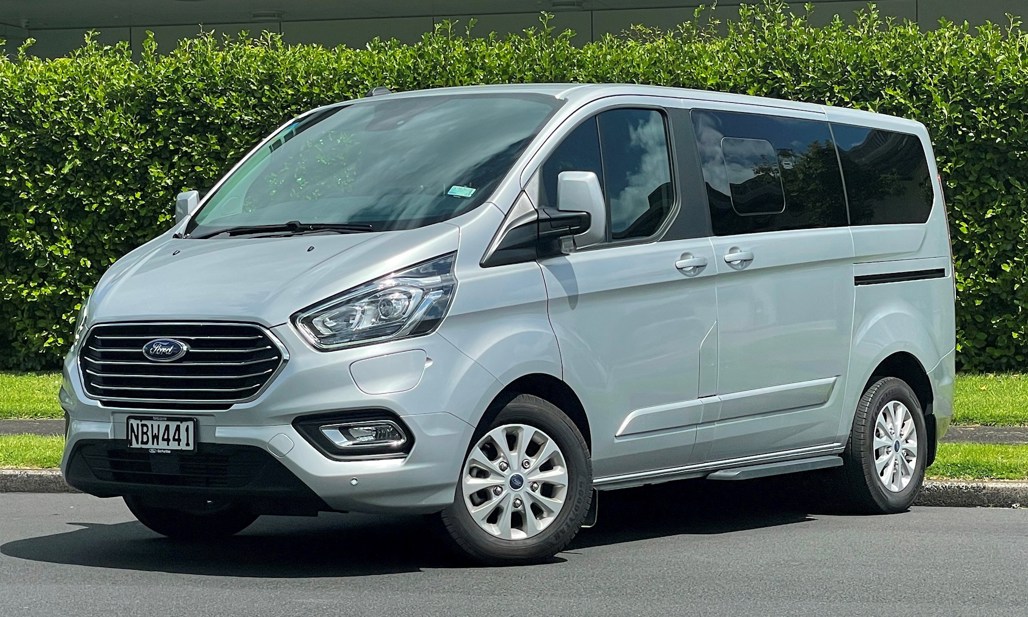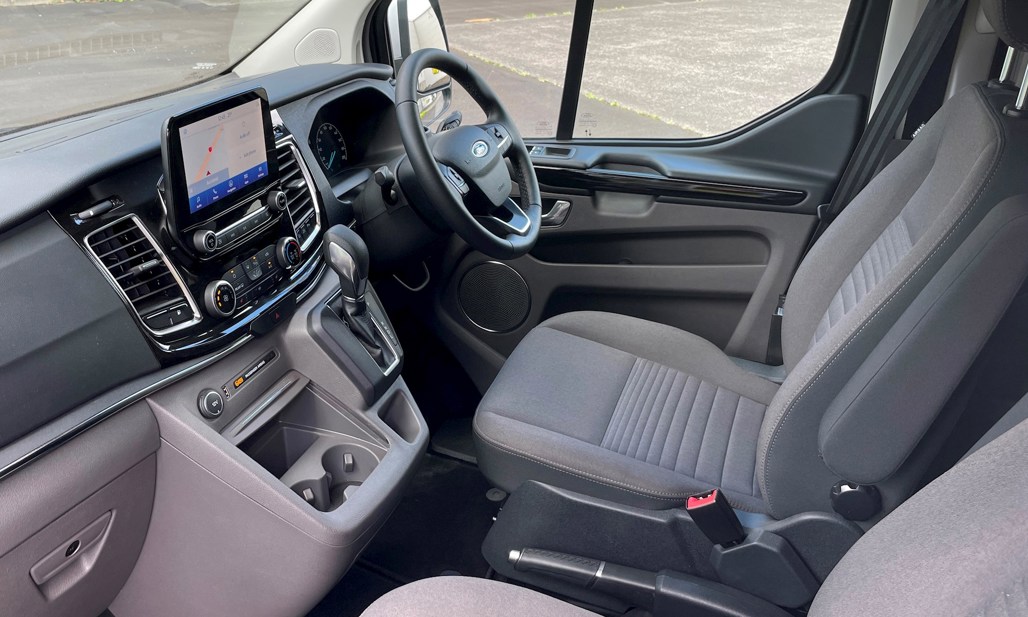When is a PHEV not strictly a PHEV? When it’s one of Ford’s Transit Custom-based electric vehicles.
Ford New Zealand is doing its best to expand its plug-in vehicle offerings any way it can. It’d love to have the glamorous Mustang Mach-E Battery Electric Vehicle (BEV) of course, but that’s still on the wish list.

For now, we have the excellent Escape Plug-in Hybrid Electric Vehicle (PHEV) SUV and even something from the light-commercial lineup, the Transit Custom PHEV. The Escape does its thing in a familiar PHEV way: there’s a 14.4kWh plug-in battery pack that’s good for 59km of zero-emissions driving, and when that runs out there’s a 2.5-litre petrol engine that fires up and turns the car into a hybrid. Easy.
The Transit Custom PHEV is a little different. It has a 13.6kWh plug-in battery and electric motor that’s good for 53km of pure-leccy driving. When that runs out, there’s a 1.0-litre three-cylinder engine that fires up and… charges the battery. But unlike the Escape, the petrol engine never drives the wheels; it just makes electricity to keep the EV power pack humming along.
So technically it’s a “range extender”; REX or EREV as it’s sometimes called. Quite unusual. That’s how the Holden Volt worked, or the early BMW i3 models (they had a scooter engine in the back). The forthcoming Nissan Qashqai operates in a similar way, although you can’t plug that in.
To view all Ford Transit models listed on DRIVEN, click here
You can totally understand Ford going for the PHEV badge, though (and it is a badge, on the tailgate). Consumers are confused enough about new electric technology and at the end of the day, all you need to know is that there’s 50-odd kays of zero-emissions running when it’s charged and when that’s gone there’s petrol to help keep you going until you can plug in again.

Ford offers the PHEV(ish) powertrain in the Transit Custom van for $89,990, but our test vehicle is the upmarket one: the Tourneo Titanium, with eight seats, carpet and nicer trim. It’s a van-cum-people mover that comes at a premium price: $99,990.
You’re paying for the plug-in technology, no question. The PHEV is $30k more expensive than the diesel-powered Tourneo, although the premium is somewhat masked by the plug-in’s Titanium specification level, which is theoretically a big step up from the diesel Trend. In reality it’s down to upholstery, trim and a few detail touches. The Trend actually has one more seat: it’s a true nine-seat “bus”.

But we’re here to talk PHEV or REX or EREV or whatever. If you haven’t driven a vehicle like this before it might feel a bit weird. It’s all good in pure electric mode, which the Tourneo sticks to even when you plant the right foot. It’s smooth and silent, even if it’s far from rapid. Quite perky off the line, but the electric motor runs out of puff quite quickly as you approach motorway speeds.
It’s easy to switch between modes. There’s a single button that cycles through Automatic, EV Now (electric priority), EV Later (hold the current charge) or Charge (fill the battery with the petrol generator) operation.
With the petrol generator running around town it can feel a bit crazy, because of course it’s just doing its own thing; you can be coasting at 30km/h and the petrol engine is still spinning noisily away. A man on a bike waved his fist at me at one stage, because he thought I was being a van-hoon.

But it’s also fun to feel it all working and because that little triple really is just a generator, it makes sense to flick it on when you’re motorway-driving to charge the battery again for when you get back into an urban setting.
The idea is that using a tiny petrol engine as a generator is more efficient than having a bigger one driving the wheels, because it can operate at its most efficient with the benefit of having that plug-in battery as a buffer. Actual fuel economy depends entirely on how often you can plug the vehicle in (every night, presumably) and how far you drive it every day. On domestic rates it costs about $2 to “fill” the battery, or about $4 per 100km.
But if you’re doing bigger kays (like, more petrol running than electric) the diesel (6.7l/100km) probably still makes more sense.

It’s hard to get your head around, but this is a technology that we’ll see more of. It’s hard to justify the extra capital cost of this particular PHEV/REX/EREV technology, but then that’s true of so many plug-in vehicles. It’s arguably less of an issue in a commercial vehicle like this, where the purchasing decision might be as much about sending the right message to clientele as it is about the ownership cost.
FORD TRANSIT TOURNEO TITANIUM PHEV
ENGINE: 13.6kWh lithium-ion battery with sinle electric motor, 1.0-litre three-cylinder petrol range extender (charges battery only)
POWER: 93kW/355Nm
GEARBOX: Single-speed, FWD
ECONOMY: 2.9l/100km, EV range 53km
PRICE: $99,990















